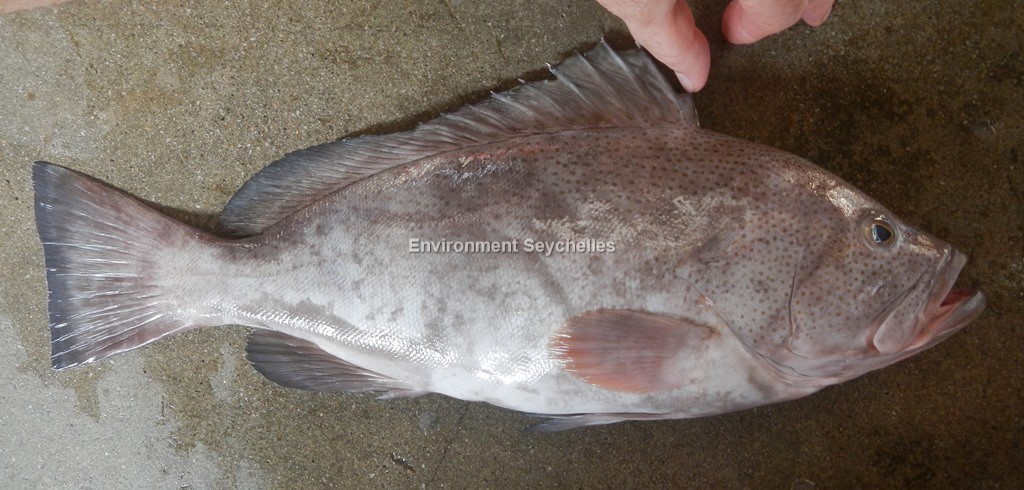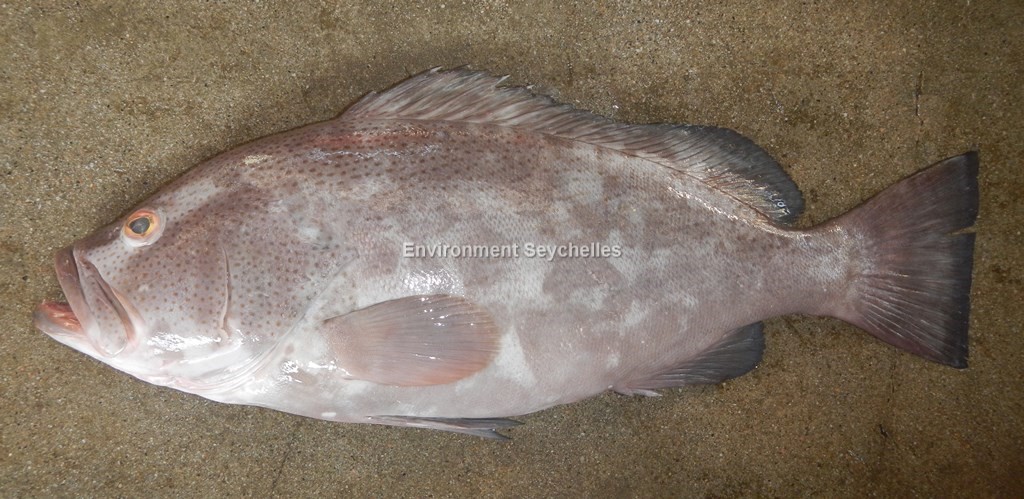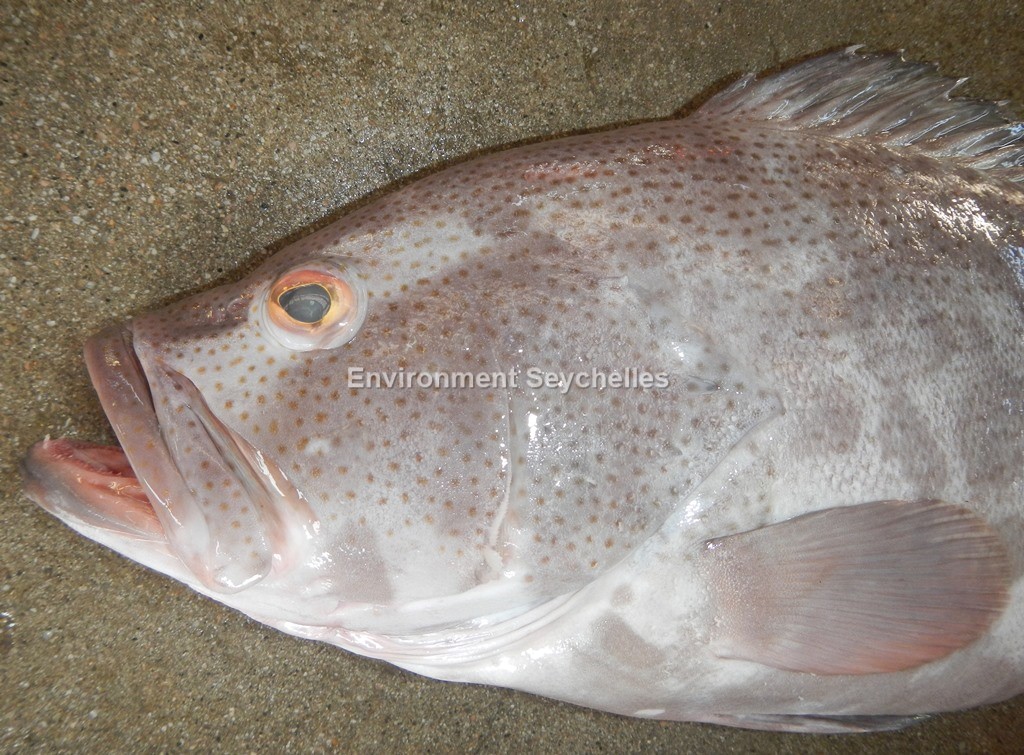Description:
Dorsal spines: 11; Dorsal rays: 17-19; Anal spines: 3; Anal rays: 8.
Medium-sized grouper. Posterior nostril approximately the same size as or slightly larger than the anterior nostril. Maxilla reaches to vertical at rear edge of eye. 2 rows
of teeth on midlateral part of lower jaw. Upper edge of operculum straight or slightly concave. Interspinous membranes of dorsal fin not incised. Pelvic fins do not reach anus.
Caudal fin truncate to emarginate.
Colour. Head, body and fins purplish grey to brownish grey, drab pale grey in death, with brown to golden brown dots on the head and anterior body, fusing to form wavy lines
posteriorly. The lines are faint or absent in large specimens and fade post mortem. Narrow dark margin to spinous dorsal fin.
Size:
Maturity: Lm unknown. Range 41-? cm. Max Length: 75 cm TL. Common length : 45.0 cm TL.
Habitat and Ecology:
Inhabits coral and rocky reefs as well as offshore banks and open silty sand and mud substrates where it seeks refuge in holes in the bottom or sand around solid structures
(depth 25-90 m). Juveniles occur as shallow as 5 m and reside near Montipora coral colonies. Feeds on a variety of small fishes and small crustaceans, especially stomatopods
and shrimps, and pelagic tunicates. Solitary.
Fishery Status:
This species is not protected or subject to fishery regulations. It is caught in the hand line fishery. First recorded in catch and as a new record for Seychelles in 2017 by
J. Nevill. Second specimen recorded in 2018 by F. Volcere (Nevill 2019). Interestingly both specimens were caught in the same area of the Mahe plateau. It is difficult to
assess the abundance and occurrence of this species in the catch as in large specimens the lines and spots fade and they may fade altogether in dead specimens. In which case
it would likely be misidentified as Epinephelus multinotatus by fishers and monitors alike. It would however appear to be a rare to very rare component of the catch.
Notes:
References:
Craig, M.T. et al. (2011). Groupers of the World - a field and market guide. NISC (Pty) Ltd, South Africa. ISBN: 978-1-920033-11-8
Froese, R. & D. Pauly. (Eds.) (2019). FishBase. https://www.fishbase.se/summary/6476 (16/03/19)
Nevill, J. (2019). Artisanal fishery catch monitoring database.
Russell, B. (2018). Epinephelus undulosus. The IUCN Red List 2018: http://dx.doi.org/10.2305/IUCN.UK.2018-2.RLTS.T132739A100562653.en. (16/03/19).
Citation:
Nevill, J.E.G. (2019). Epinephelus undulosus, Wavy-lined grouper. Seychelles Seatizens. www.seatizens.sc. https://seatizens.sc/species/epinephelus-undulosus-quoy-gaimard-1824/ (edited 07/08/22).




There are no comments